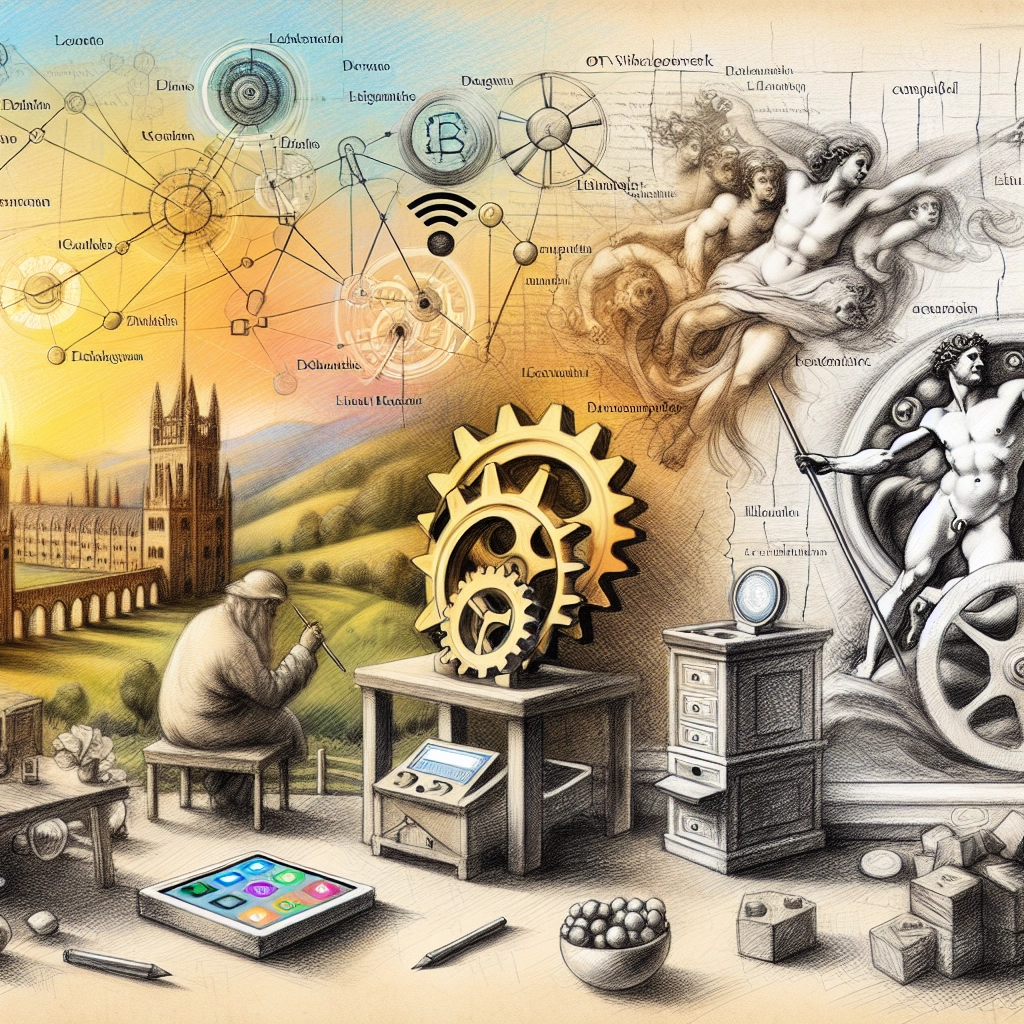
- Published on
- Authors

- Name
- ric de yuga 😄
🌟 Integrating Blockchain, IoT, and Wireless Power Transfer: A Comprehensive Tech Stack for the Future
In the ever-evolving landscape of technology, integrating Blockchain (BC), Internet of Things (IoT), and Wireless Power Transfer (WPT) offers a promising future. This comprehensive tech stack addresses current technological limitations while unlocking new possibilities. Let’s dive into the synergies, challenges, and solutions of combining these cutting-edge technologies.
📚 Blockchain (BC) + Internet of Things (IoT)
Blockchain (BC)
Problems
- Insufficient Nodes: A lack of nodes on the network can compromise security and decentralization.
Solutions
- Secure Data Storage and Transfer: Blockchain offers a secure, peer-to-peer method for storing and transferring data.
Internet of Things (IoT)
Problems
- Security Vulnerabilities: The vast number of IoT connections often lacks critical security measures.
Solutions
- Interconnected Devices: IoT enables connectivity among various devices, facilitating a peer-to-peer network.
Combination
Why It Makes Sense
- Enhanced Security and Configuration Management: Blockchain provides the security and configuration management that IoT lacks.
- Efficient Data Transfer: The numerous interconnected IoT devices can serve as nodes, accelerating peer-to-peer blockchain data transfers.
What Is Still Lacking
- Power Requirements: Each IoT device acting as a node requires significant power for computing and processing information.
🔌 Wireless Power Transfer (WPT) + Blockchain (BC)
Wireless Power Transfer (WPT)
Problems
- Vulnerability to Hacks: Wireless data transfer can be intercepted or hacked.
- Limited Distance Efficiency: Power transmission over long distances is inefficient.
Solutions
- Airborne Electricity Transfer: Enables electricity to be transferred through the air.
- Untraceable Power Grids: Creates interconnected power grids with potential for endless applications.
Blockchain (BC)
Problems
- High Energy Consumption: Blockchain operations, especially smart contracts, consume a lot of energy.
- Expensive Smart Contracts: The gas fees for executing smart contracts can be prohibitive.
Solutions
- Secure Data Handling: Blockchain ensures secure and encrypted data storage and transmission.
Combination
Why It Makes Sense
- Data as Transaction Gas: The data processed can act as the gas required for blockchain transactions.
- Secure Peer-to-Peer Networks: Builds a secure data storage system for peer-to-peer networks.
What Is Still Lacking
- Node Availability: Blockchain is ineffective without a sufficient number of nodes.
- WPT Efficiency: Wireless power transfer is currently inefficient over long distances.
- Infrastructure Needs: Requires a network of interconnected devices to transmit data and energy over short distances rapidly.
🌐 Wireless Power Transfer (WPT) + Internet of Things (IoT)
Internet of Things (IoT)
Problems
- Power Dependency: IoT devices often need to be plugged in or have batteries that require regular maintenance.
- High Power Consumption: The large number of sensors and devices consume significant power.
Solutions
- Low-Power Data Transfer: Many low-power IoT devices can transfer data at speeds comparable to wired connections.
Wireless Power Transfer (WPT)
Problems
- Long-Distance Transmission: Efficient power transmission over long distances is a challenge.
- Infrastructure Requirements: Needs a robust infrastructure to support long-distance power transmission without high energy loss.
Solutions
- Wireless Operation: Devices can operate without needing to be charged via wires or batteries.
- Integrated Power and Data Signals: Utilizes the device’s natural structure to combine data and power transmission.
Combination
Solutions
- Eliminate Charging Needs: IoT devices can function without constant recharging, reducing maintenance needs.
- Integrated System: Combines data and power transfer, streamlining the infrastructure required for IoT networks.
Areas Still Lacking
- Long-Distance Efficiency: Further innovation is needed to make wireless power transfer efficient over longer distances.
- Power Consumption: Addressing the high power consumption of IoT devices remains a challenge.
🏗️ Complete Tech Stack
Innovation
- Synergistic Technologies: Integrating Blockchain, IoT, and WPT creates a robust and innovative tech stack.
- Enhanced Security: Blockchain ensures secure data handling across interconnected IoT devices.
- Efficient Power Management: WPT reduces the need for wired power sources, enhancing the functionality of IoT networks.
Areas for Improvement
- Node and Power Management: Addressing the power needs and node availability for Blockchain and IoT devices.
- Infrastructure Development: Building a comprehensive infrastructure to support the combined technologies.
- Long-Distance Power Transfer: Improving the efficiency of WPT over long distances.
🔮 Conclusion
Combining Blockchain, IoT, and Wireless Power Transfer offers a futuristic tech stack with immense potential. This integration addresses current technological limitations while paving the way for innovative solutions in security, connectivity, and power management. As we continue to refine these technologies, the future of interconnected devices and secure, efficient networks looks promising.
Stay tuned for more updates and advancements in this exciting field. 🚀
